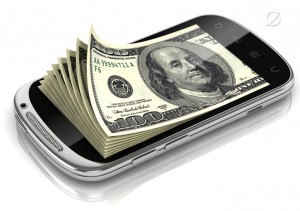By Mohamed Dalmar
Early in 2013, the new Somali government faced severe currency crisis caused by the sharp appreciation of Somali shilling against the U.S. dollar. I recall the criticism and the recrimination directed to the leaders of the new government who were accused of failing their responsibility of providing a monetary system for the country. I recall President Hassan asking the international community for food donations to mitigate the severity of this problem. I recall Puntland suspending its relationship with the Federal government because the latter failed to print currency for the economy.
 I followed this problem with keen interest. To my surprise, suddenly the hue and cry about the currency crises subsided and the accusations and the attacks against the government ceased. I asked myself: what happened? How did they find a solution to the problem of currency crisis? I researched and I haven’t found any shipment of new banknotes!
I followed this problem with keen interest. To my surprise, suddenly the hue and cry about the currency crises subsided and the accusations and the attacks against the government ceased. I asked myself: what happened? How did they find a solution to the problem of currency crisis? I researched and I haven’t found any shipment of new banknotes!
I think I got the answer now. The problem was not solved by government actions. It was not solved by the introduction of new currency or the supply of food aid donations. What solved the problem of acute shortage of Somali shillings and changed the situation are the “mobile money” services. I did not realize this until I came to Somalia for a brief visit. Thus, this article is about mobile money.
What kind of money is mobile money?
This mobile banking follows a simple procedure as outlined below:
1) There must be a telecommunication company providing the service
2) You register by filling a form
3) You provide an ID and the agent takes your picture
4) You open an account
5) You choose a PIN
6) You hand the Dollar amount (cash) you desire to deposit to the agent
7) After a few seconds you receive a text message confirming you have deposited such and such amount.
Your cash money has disappeared and you don’t see it. But don’t worry. It is real money and it is even more efficient than the cash. For example
– It is more convenient. While you are sitting in a sofa in your house and using your telephone, you can buy whatever you want, send money to whomever you want and see the balance remaining.
– It reduces the transaction cost. For example, before the introduction of mobile money, if someone who is in Galkayo wanted to buy merchandise from Bossaso, he or she was forced to travel with a sack of cash from Galkayo to Bossaso, spend a day for travelling; risk the loss of money through robbery, spend money for hotel while in Bossaso, go through the trouble of counting bundles of dirty banknotes. Now within seconds you send the money through the telephone and save money and time that you can use for improving the productivity of your business. This, in turn, will help the whole economy to grow.
– Mobile money represents a financial revolution made by the less developed countries. These countries are going towards a cashless society while the developed countries are far behind in this sense.
– A survey conducted by Gates Foundation, World Bank and Gallup found that “Somalia was one of the most active mobile money markets: 26% of the population are reported using mobiles to pay bills, which is the highest rate in the world, and 32% to send and receive money”.
Mobile-money service providers in Somalia are:
1) SAHAL mobile money services provided by Golis Telecom in Puntland
2) EV-PLUS mobile money services provided by Hormud Telecom in Southern Somalia,
3) ZAAD mobile money services provided by Somtel Telecom in Somaliland
4) E-MAAL mobile money services provided by Nationlink Telecom
While I was in Garowe, Puntland, I had the opportunity to meet with the managers of Golis Telecom. I met Said Aden Mohamed, the general manager; Osman Isse Mohamud, The sales manager; and Mohamud Ismail Aw Osman, the manager of Nugal region. These Golis officers told me that:
a) There are 250,000 Sahal subscribers in Puntland;
b) The total transactions in a month amounts to US$ 20 million;
c) The average yearly positive balance is US$ 1 million;
d) There are 60 service centres with 1,100 staff
e) Golis has a banking segment: the Salama bank.
Read more : Mobile Money – The case for Somalia
Mohamed Dalmar
Email:[email protected]
——————
Mr. Dalmar has written a book and numerous articles/analysis on Somalia’s financial environments post the collapse of Somalia central government., Mr.Dalmar is also the former Director General of Somalia’s Central Bank and prof of Economics at the faculty of Economic, Somali National University. Mr. Dalmar is a contributor of WardheerNews on financial affairs
We welcome the submission of all articles for possible publication on WardheerNews.com. WardheerNews will only consider articles sent exclusively. Please email your article today . Opinions expressed in this article are those of the author and do not necessarily reflect the views of WardheerNews.
WardheerNew’s tolerance platform is engaging with diversity of opinion, political ideology and self-expression. Tolerance is a necessary ingredient for creativity and civility.Tolerance fuels tenacity and audacity.
WardheerNews waxay tixgelin gaara siinaysaa maqaaladaha sida gaarka ah loogu soo diro ee aan lagu daabicin goobo kale. Maqaalkani wuxuu ka turjumayaa aragtida Qoraaga loomana fasiran karo tan WardheerNews.
Copyright © 2024 WardheerNews, All rights reserved


